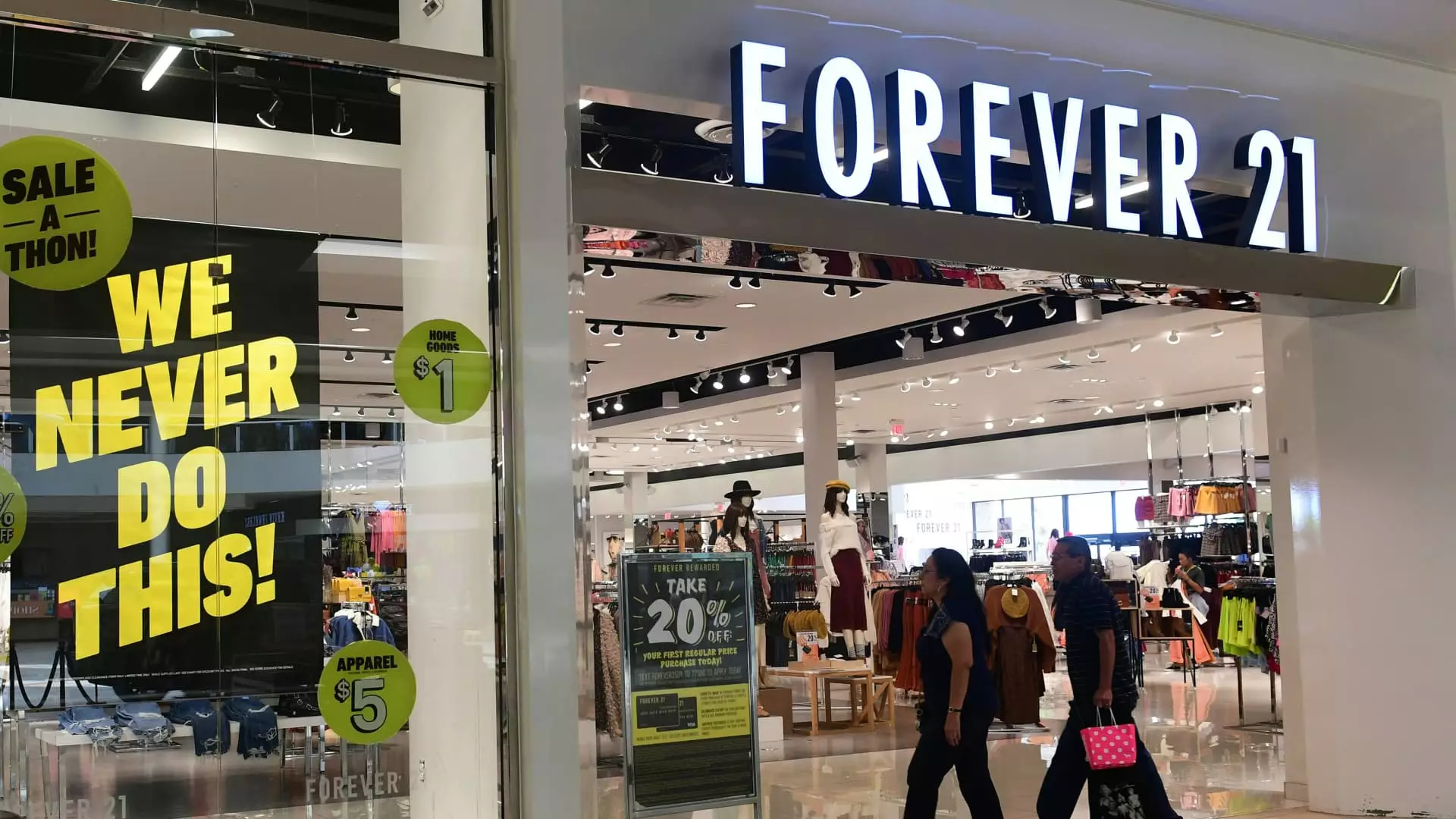Forever 21, once a prominent player in the fast fashion sector, now finds itself mired in financial turbulence that threatens its very existence. Sources close to the company have revealed ongoing talks with liquidators, signaling a shift in strategy as the retailer grapples with the challenging task of finding a buyer. The fashion retail landscape has become increasingly competitive, particularly with the rise of aggressive online players like Shein and Temu, putting traditional players like Forever 21 under immense pressure.
The situation has escalated to the point where Forever 21 is reportedly considering a second bankruptcy filing, reminiscent of its initial Chapter 11 filing in 2019. This earlier move aimed to restructure the company’s balance sheet, but the subsequent years have not led to a recovery or reinvention of its business model. Today, Forever 21 is faced with multiple challenges that compound its troubles, including increasing tariffs, loss of brand prestige, and management of inventory, all of which have significantly impacted profitability.
Competition and Market Disruption
The rapid ascent of e-commerce platforms like Shein and Temu has dramatically changed the fast fashion landscape. These companies, unencumbered by the high overhead costs associated with brick-and-mortar stores, leverage technology and artificial intelligence to track and respond to fashion trends with unprecedented speed. This efficiency has left legacy brands like Forever 21 struggling to keep pace with the innovative marketing tactics and curated consumer experiences offered by their competitors.
Forever 21 once embodied the spirit of fast fashion, appealing to a market eager for trendy yet affordable attire. However, the company’s decline in consumer appeal has made it difficult to carve out a place in this newly dominated market. The brand’s identity is at a crossroads, where it is battling not just for financial survival but also for relevance in a landscape increasingly shaped by digital natives.
The Implications of Liquidation Talks
The options now on the table for Forever 21, including the discussion of engaging with liquidators, indicate a critical juncture for the company. If it follows this path, the funds generated could be directed toward paying off creditors rather than reinvesting in the brand or seeking out potential buyers. This scenario represents a drastic measure that speaks volumes about the retailer’s precarious position.
Despite this bleak outlook, there is a glimmer of hope. Forever 21 could still seek a buyer willing to invest in turning the brand around or negotiate with creditors to postpone liquidation. The landscape is ripe for maneuvering; however, finding an interested party with the resources and vision to revive the brand is no easy task, particularly when many potential investors are wary of the high risks involved.
Recently, Forever 21 entered into a partnership with Shein, which has raised eyebrows within the retail community. This alliance, however, has been described as a work in progress by Jamie Salter, CEO of Authentic Brands Group, which manages Forever 21’s operations. Such a partnership hints at a possible revamp of Forever 21’s appeal, but without a significant and effective strategy, it seems unlikely to yield the desired results.
The presence of Authentic Brands Group as a key player complicates the scenario. While it owns the intellectual property of Forever 21, questions arise regarding the future of this struggling retailer. Typically, companies in distress either attract the interest of brand management firms like Authentic Brands Group or fade into obscurity, a fate whose outcome rests heavily on the decisions made in the coming weeks.
Forever 21’s struggles are emblematic of broader shifts within the fast fashion segment. E-commerce dominance has reshaped consumer expectations and forced traditional retailers to reevaluate their operations. The comparison to Amazon’s early impact on retail demonstrates how newcomers equipped with technology and agility can disrupt industries and contribute significantly to the decline of established names.
As Forever 21 navigates this challenging economic environment, it becomes increasingly urgent for the company to rethink its approach to market engagement. Adapting to the evolving landscape and reaching consumers directly through online platforms could provide a lifeline. Nevertheless, the question remains: Can Forever 21 adapt swiftly enough to avoid becoming another statistic in the long list of retail failures?
Ultimately, while there are many hurdles ahead, the path forward for Forever 21 requires a blend of reinvention, strategic partnerships, and innovative thinking to reclaim a spot in an industry that has dramatically changed in just a few short years. The stakes are high, and the time for action is now.

